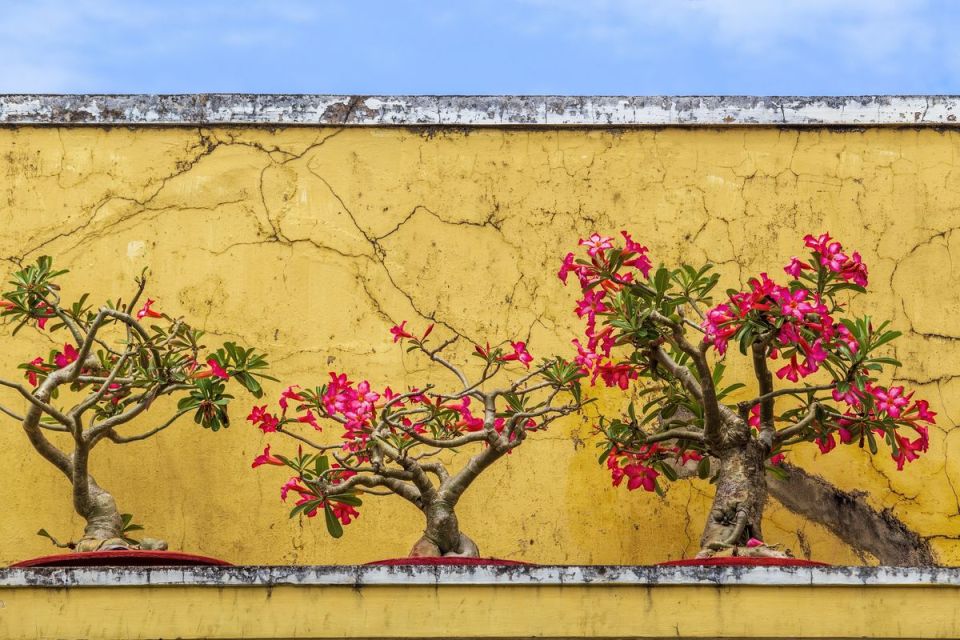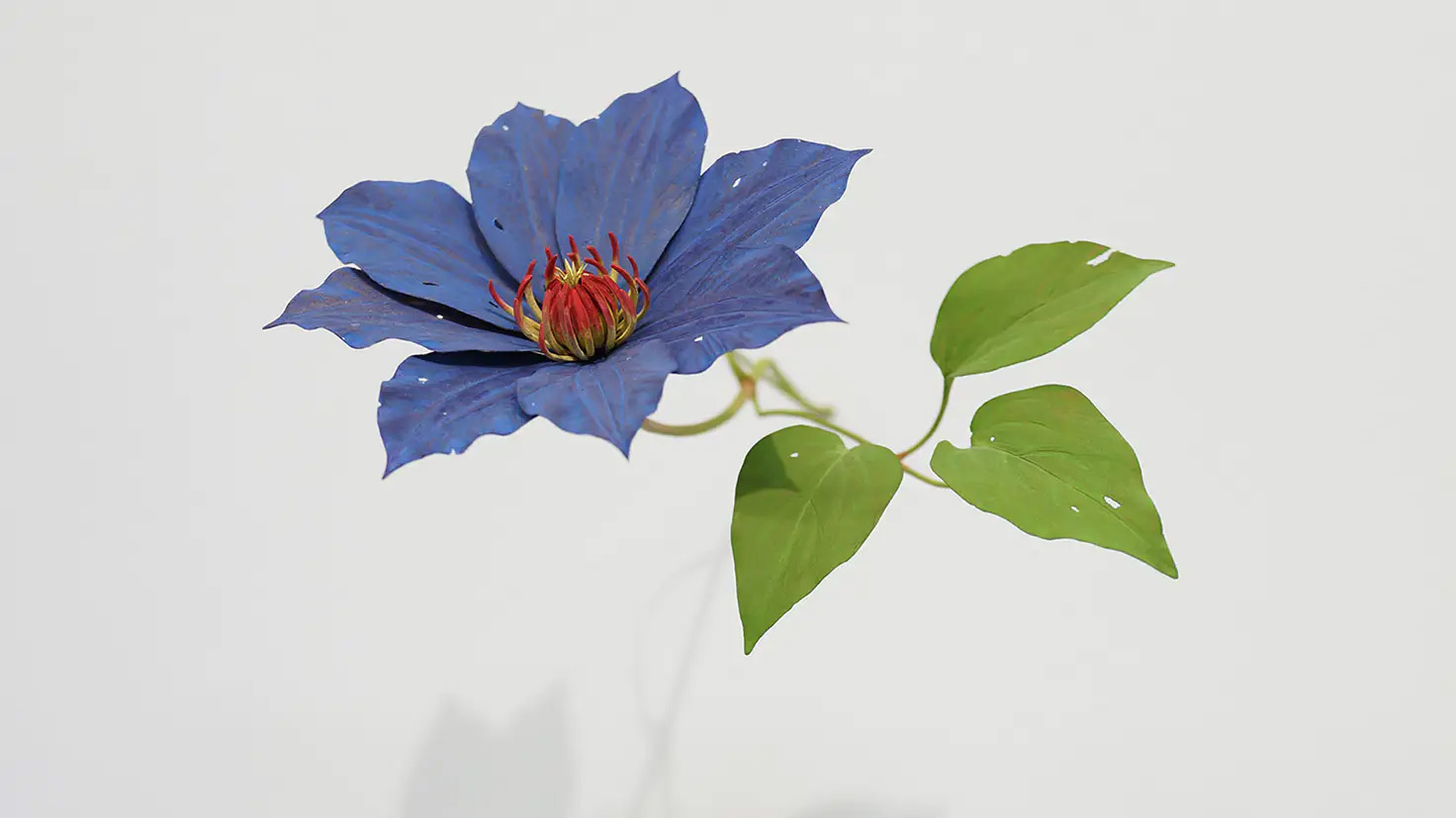
JEAN-CLAUDE SOBOUL//GETTY IMAGES
JUMP TO:
From country roses to English roses, there are many varieties of the classic garden flower. But if you don’t live in the ideal growing environment (aka the English countryside), it can be difficult to grow an abundance of blooms. That’s where the desert rose plant comes in. Thanks to its thick succulent trunk and delicate leaves, it’s more similar to a bonsai tree than a rosebush, but its deep pink, trumpet-like flowers give you the color you want.
A flowering tree native to Africa, the Middle East, and Madagascar, the desert rose loves (as you might guess from its name) a desert-like environment. Hot weather, low humidity, and sandy soil help this easy-growing plant thrive. But you don’t have to live in the Sahara to keep a flowering desert rose happy. Read on for desert rose care tips, troubleshooting advice, and guidance on how to grow this beautiful bloom from seed.
_______________________________________________________________________
Read Also : 20 Immunity Boosting Foods You Need In Your Diet Today
________________________________________________________________________
How to Care for a Desert Rose Indoors
Sunlight
It’s important to try to mimic the desert climate to grow a desert rose. Six hours of bright, direct sunlight per day is ideal for healthy growth. If you plan to keep your desert rose indoors, choose a spot in your home that gets plenty of light throughout the day. Ideally, a southern-facing window, sunroom, or bright windowsill is best.
Watering
Like many succulents, the desert rose is very easy to overwater. Its water needs vary depending on whether it’s growing or dormant (more on that in a minute), but you should never soak the roots or oversaturate the soil. The desert rose can be susceptible to root rot if it becomes too moist. Always allow the soil to dry out completely before watering again. If you keep your desert rose indoors in a pot on a saucer, the pot should have plenty of draining holes or drainage rocks at the bottom. A clay or terra-cotta pot also wicks away excess moisture.
When the plant is dormant during the fall and winter months, water it only once a month or so. The Sill recommends checking the trunk to tell if the desert rose is well hydrated. If the trunk is thick and swollen (plump, not overly large), your plant has plenty of water.
Soil
You don’t want to use traditional potting soil if you’re planting your desert rose indoors or in a planter. Use a succulent soil mix to help your desert rose thrive. In addition to regular potting soil, it contains coarse sand and perlite or pumice to assist with drainage.
Temperature and Humidity
Like any plant native to the desert, the desert rose adores warm, dry temperatures. It will start to droop as soon as thermometer reading drops below 50 degrees. It does best at temperatures between 65 and 90 degrees Fahrenheit. Humidity isn’t important to the desert rose; as you might expect, it prefers a dry climate.
Pruning
At the end of the dormant season, right before temperatures rise again, prune back any cold-damaged areas to prepare the branches for new growth. Trim long, lanky stems to balance the stem growth symmetrically; this will help keep the plant more stable. We also recommend removing branches that rub or cross other branches, cutting just above a leaf node or where the stem joins with another stem.
How to Grow a Desert Rose Outdoors
Soil
Dry, clay-like soil is best for the desert rose. Sandy, gravelly soil also works great.
_______________________________________________________________________
Read Also : Top 31 Natural Home Remedies for Flu Symptoms
________________________________________________________________________
Sunlight
The best place to plant a desert rose outdoors is in a spot that’s not completely shaded by taller plants. However, you’ll want to provide some protection from the high sun, since it can scorch the leaves.
Overwintering
Due to their warm-weather nature, desert rose plants cannot endure frost or prolonged cold temperatures. Below 50 degrees Fahrenheit, the plant will drop its leaves and enter its dormant phase. If you’re able to, bring the plant indoors, stop watering it, and keep an eye on it to make sure it doesn’t freeze. A garage that remains above freezing temps is the perfect place to keep it. While it’s dormant, it doesn’t need sunlight or water; it’s essentially hibernating until spring. Once warmer temperatures return, place it in a window with a sunny exposure, add water slowly and gradually, and reintroduce your desert rose plant to outdoor life.
Growing Desert Roses from Seed
The best time to plant desert rose seeds is right at the start of spring. Before potting, germinate the seeds by soaking them for several hours or a full day to rehydrate them. Then, place the seeds 2 inches apart in a pot of soil, and cover them lightly with more soil. Water thoroughly and repeat only when the soil has dried out. When the seedlings sprout, move the pot to a sunny location.
Common Desert Rose Problems
Yellowing Leaves
Sudden leaf loss or yellowing leaves is one of the most common signs of root rot in desert rose plants. Root rot is caused by overwatering. Remove any affected leaves and stems, then unpot the plant and cut away any black, mushy, or damaged root sections. Be sure to clean your knife between cuts so the root rot doesn’t spread. Apply a fungicide, and replant your desert rose in a fresh pot of well-draining succulent mix.
_______________________________________________________________________
Read Also : Ancient Tooth Finally Reveals Whether Neanderthals Were Carnivores
________________________________________________________________________
Spotting on Leaves
White, powdery spots on your desert rose leaves are most often mildew. Place the plant in a dry, warm location and mist the plant heavily with water (the fungus doesn’t like water). Be sure to space out the branches and move it away from your other plants to prevent the mildew from spreading.
Desert Rose Isn’t Blooming
To encourage blooming, make sure your plant receives at least six hours of direct sunlight a day. During the prime growing months of spring and summer, you can also use a fertilizer once a month to promote growth. If your plant was recently repotted, give it time (a couple of months) to adjust to its new growing environment.
Spider Mites
The most common pests for desert roses are spider mites. To check your plant for them, shake it over a white sheet of paper; any small black dots you see are probably spider mites. These tiny pests suck at the sap in the stems, which can lead to leaf discoloration and eventually plant death. To clear up the infestation, spray a forceful stream of water on the underside of the leaves to send the bugs flying. Repeat this every few days. If the infestation persists, you can treat it with neem oil or another insecticide.
Tags: #climate, #flower, #garden, #gardening, #getgreengetgrowing, #gngagritech, #greenstories, #plant, #pruning, #rose, #roseseeds, #soil, #SpiderMites, #succulents, #sunlight, #watering









